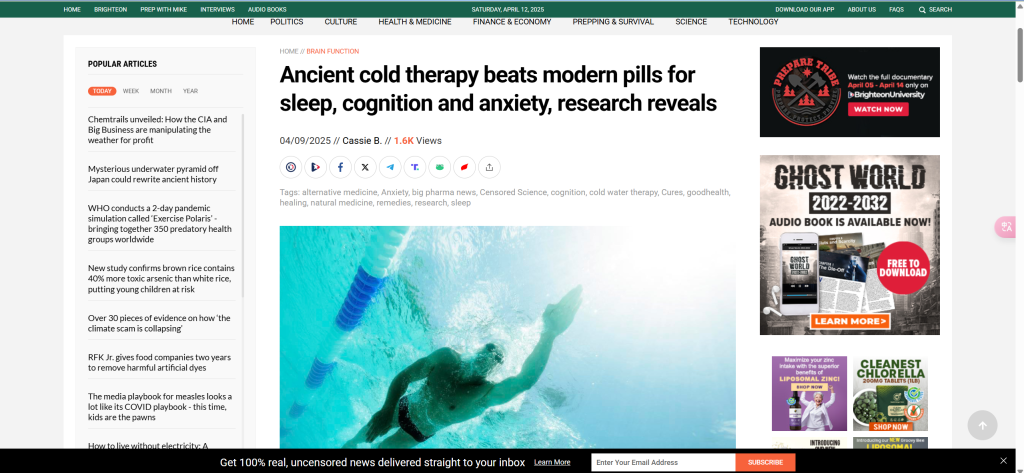“You are fake news”—these were the words Donald Trump shouted at a CNN journalist in 2017 (Flew, 2021). Since then, the phrase “fake news” has rapidly spread across global social media, and was even named Word of the Year by the Collins Dictionary in 2017. However, as the term gained popularity, its meaning also began to shift. No longer referring solely to fabricated content, it has increasingly been used as a rhetorical weapon by political figures to dismiss criticism and silence dissent.
In the digital age, the spread of information is shaped and accelerated by platform algorithms. As a result, false and misleading content travels faster and wider than ever before. People easily fall into echo chambers, where algorithmically curated content reinforces existing beliefs and emotional reactions. This weakens public judgment, making it more difficult to distinguish fact from fiction.
In an era overwhelmed by information, discerning truth has become a major challenge. This article explores the evolving definition of “fake news,” how misinformation is produced and spread, the societal consequences it brings, and the strategies we might adopt to confront it.
What is fake news? How does it differ from misinformation and disinformation?
The term “fake news” may appear straightforward, but its ambiguity often leads to varying interpretations—and frequent misuse. As Caroline Jack (2017) points out, “our vocabulary is not perfect”; using only the label “fake news” is no longer sufficient to accurately describe the wide range of problematic information circulating today. To avoid the confusion caused by the vagueness of this term, scholars increasingly advocate for the use of more precise distinctions, such as misinformation and disinformation.
So, what’s the difference between the three?
Misinformation refers to false or inaccurate information shared without the intent to deceive, often because the person believes it to be true. Due to algorithmic amplification, such content often matches the audience’s existing beliefs, making it sound plausible and increasing the likelihood of sharing. It usually spreads through trusted social circles—like friends and family—adding credibility and making it harder to challenge.
Though unintentional, misinformation can still cause serious harm. During COVID-19, false claims led people to refuse vaccines or ignore symptoms, delaying treatment and increasing risk. Even when well-intentioned, misinformation can fuel widespread misjudgment and real-world consequences.
Disinformation refers to false or misleading information that is deliberately created and distributed with the intent to deceive or manipulate. Its motives are clear, and its production and dissemination are often strategically planned. Typical characteristics of disinformation include fabrication, selective editing, distortion of facts, or taking statements out of context. Compared to misinformation, disinformation is more dangerous because it deliberately exploits and manipulates public emotions and judgment. In an environment where people are exposed to an overwhelming volume of digital content every day, disinformation can blur the line between truth and falsehood—making it increasingly difficult for individuals to assess the credibility of the information they receive.
Fake news was originally used to describe fabricated content that mimics the style and format of real journalism—in this sense, it closely resembles disinformation. It often includes clickbait headlines, invented or exaggerated events, and selectively edited or misleading news reports. However, the term has since taken on a more weaponized political meaning. Today, “fake news” is frequently used not just to describe falsehoods, but to dismiss criticism, discredit opponents, and manipulate public discourse. It has become a rhetorical tool to undermine legitimacy, rather than a neutral descriptor of false content.
The danger of the term “fake news” goes beyond the harms posed by misinformation and disinformation alone. As Flew (2021) notes, the label itself has contributed to a growing loss of trust in the news industry, while also undermining the integrity of digital information ecosystems. Rather than clarifying the nature of problematic content, the term has in many cases obscured the issue further, leading to both institutional distrust and chaotic information flows online.
The Making of Fake News
Fake news doesn’t emerge out of nowhere. Its existence is deeply tied to the motivations of its creators and the algorithmic mechanisms that digital platforms use to target specific audiences. In many cases, due to the nature of today’s internet platforms, fake news travels faster and reaches wider audiences than factual news.
Why Is Fake News Created?
Fake news is typically created with two main types of motivation in mind.
The first one is also the one we are most likely to come across in our daily life, and the purpose is very direct – it is to make money. Through the use of exaggerated headlines to earn clicks, or through the fabrication of some false information to create anxiety for the user to gain attention and retweets to get a share of the platform traffic.
Take Natural News as an example, on the surface it is a website that focuses on natural remedies in the name of health and wellness, but most of the articles are ‘headline party’, false propaganda and rejection of the mainstream medical consensus. This site has long been flagged by Facebook and Google, and articles containing this site have been blocked and pushed down.

Like this article, ‘Ancient cold therapy beats modern pills for sleep, cognition and anxiety, research reveals’, which uses the anti-medical consensus to create a ‘you’ve been lied to’ viewpoint in the absence of sufficient evidence. The article ‘Ancient cold therapy beats modern pills for sleep, cognition and anxiety, research reveals’ creates a ‘you’ve been lied to’ point of view in the face of insufficient evidence and inspires distrust of mainstream medicine. In fact, the real purpose of this kind of article is not to disseminate knowledge, but to attract users’ curiosity to click through the title party, and then make money through the form of traffic and product advertisement.
The second is used for political manipulation or the intentional creation of false facts to manipulate public opinion.2024 The Bondi Junction stabbings incident is an example that fits the bill.

Just like after the Bondi Junction stabbings in 2024, in the complete absence of any evidence to designate the killers as Muslims, misinformation and prejudicial discourse about the identity of the assailants quickly emerged on social media. These false claims misled a large number of people. This misinformation has strained the social atmosphere, while also triggering a great deal of cyberviolence and hate speech against innocent groups, undermining the security and trust of public society.
Why Do We Believe It?
1. Emotional Resonance
People are more likely to accept and trust information that aligns with their existing beliefs, even when that information is false. This is also why some news or claims may seem absurd or exaggerated, yet people still believe them—because they emotionally resonate with what the audience already thinks or feels.
2. Technological Advancement
Many people—especially the elderly—find it difficult to keep up with the rapid development of modern technology and society. For example, tools like Photoshop editing or AI-generated videos are often unfamiliar to them. As a result, people are more likely to place trust in images or videos created by technologies they don’t fully understand, simply because they appear realistic or authoritative.
3. Social Influence
People are more likely to trust information shared by close family members or friends.
When content is forwarded out of care or concern, most individuals tend to believe it—especially when it involves health tips or lifestyle advice that are easy to follow but lack scientific backing. The sense of trust within personal relationships often overrides skepticism, making well-intentioned misinformation particularly difficult to challenge.
4. Platform Algorithms and Content Promotion
Social platforms do not discern whether information is true or false. Social platforms amplify current trending information based on mechanisms such as likes, comments, etc., and as Bruns (2021) states, it is often the fake news that resonates the most emotionally. Social platforms will also push more appropriate information based on user behaviors, which will also make it easier to gain people’s trust.
The Societal Consequences of Fake News
1. Erosion of Public Trust
The biggest problem with fake news is that it continues to weaken our perception of society. Institutional systems such as science, medicine, and government are important and authoritative to trust in society. But the emergence of fake news has made the authority of these institutions increasingly fragile, making it difficult for people to trust them. In an age of digital media where fake news is rampant, it is difficult for people to discern whether information is true or false, and they gradually lose their sense of judgement and security, which can lead to skepticism and even denial of the information they receive.
This is evidenced by the decline in people’s interest in and trust in the news in many countries. And when this happens, it makes people more inclined to believe what they want to believe, thus getting into a vicious circle.
2. Inciting Social Division
Stirring up social antagonisms and provoking conflicts is also what fake news is good at. What fake news does best is to force the public to ‘take sides’ in extreme ways, by creating an ‘either we’re wrong or they’re wrong’ framework that allows the public to ignore the details of the situation and look for the so-called enemy. The extreme emotions generated in this way, such as anger and sadness, further contribute to the creation and spread of hate speech.
Like the Bondi Junction stabbings mentioned earlier, fake news can target ethnic and religious positions, inciting the public to deepen their stereotypes and prejudices. Such extreme sentiments based on false information can mislead people’s perceptions, causing irreparable harm to innocent people and creating fear and confrontation in society.
3. Physical Harm and Public Health Risks
When the authority of science and medicine is questioned, the impact of fake news is even more serious. Because much of the knowledge is inaccessible to the general public, it is difficult for people to distinguish between true and false without professional education. With this mixture of true and false information, it is more likely that false information will take advantage of the situation to cause panic and anxiety. Not only that, but the wrong use of medication and blind faith in ‘miracle cure’ that has no medical or scientific basis may affect people’s health.

I believe we all have heard of the toilet paper incident of COVID-19 in Australia, which is a typical irrational rush brought about by fake news. At that time, the masses were in panic and anxiety, and there was an oversupply of toilet paper in the shops, and even though Coles and Woolworths had already made it clear that they had sufficient stock, some people still fought as a result. This is the danger posed by fake news.
Are We Really Powerless Against Fake News?
In this era of information platforms, fake news can be said to be pervasive. Therefore, the first step to resist fake news is not to rely on other people or platforms to help you distinguish, but to have the basic information judgement and cognitive ability. This includes verifying the source of information, comparing information from various aspects, and not taking sides to control your emotional speech.
Secondly, the platform should take more responsibility. Nowadays, social platforms are not just neutral technological tools, they hold the influence of information dissemination. These platforms such as TikTok, Facebook should be responsible for their own platform push. Although in recent years platforms have also been rigorously audited, some videos will have a ‘content may contain false information’ warning underneath, but there is still a need for stricter auditing, prioritizing the push of more authoritative sources of video news instead of just trying to gain traffic and popularity.
Finally, the government should intervene, as the platform is a decentralized structure, and it is difficult to unify censorship standards across national languages and cultures, so local governments should take the initiative to take on the responsibility of censoring and controlling fake news. But at the same time, they must also ensure the normal freedom of speech of the masses and safeguard their right to know. How to find a balance between the two is crucial.
Conclusion
In this digital age, information overload confronts us with unprecedented challenges, and fake news has become one of the most serious problems in the Internet. It affects our trust and manipulates our emotions. It is also very good at exploiting our cognitive biases and platform algorithms to provoke mass social confrontation. But we still have the tools to fight it. We need to think more rationally and be more careful and proactive in verifying information. At the same time, we need to make sure that we don’t become ‘fake news’, and that we are responsible for the accuracy of the information before forwarding it to others. At the same time, the platform and the government should also share the responsibility to present a cleaner and better public information environment for the public.

Be the first to comment